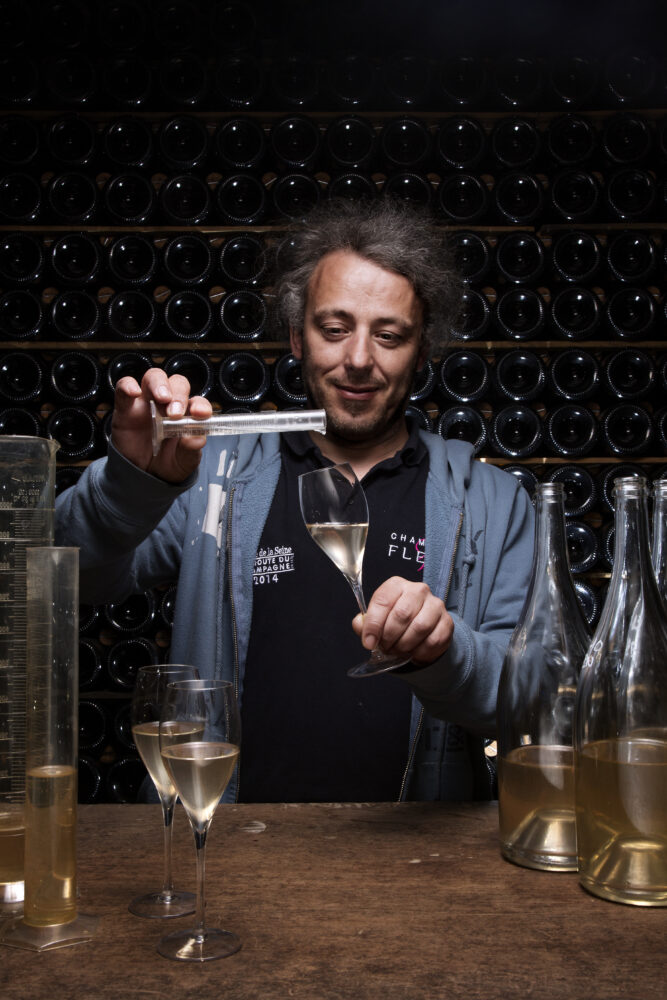Wine List
Nocturne: NV Fleur de l’Europe Brut Nature, NV Blanc de Noirs Brut
Grand Tasting : NV Fleur de l’Europe Brut Nature, NV Blanc de Noirs Brut, 2013 Robert Fleury Brut Nature, 2010 Millesime Extra Brut
Gala Dinner : 2010 Millesime Extra Brut Magnum, 1993 Symphonie d’Europe Extra Brut Double Magnum
This well-known Aube house was founded by Robert Fleury in 1929, although his father Emile had been growing grapes in the Bar-sur-Seine region since 1895, and in fact, had been the first to plant grafted vines here after the arrival of phylloxera. Robert Fleury began making champagne as a récoltant-manipulant, and continued to do so for nearly forty years. In 1962, his son Jean-Pierre took over the estate, and quickly became interested in more conscientious methods of farming: in 1970, he began to use exclusively organic fertilizers, and he abandoned synthetic herbicides in favor of mechanical methods of weed control. In 1989, he began cultivating three hectares biodynamically, becoming the first grower in Champagne to explore biodynamics, and by 1992, he had converted the entire estate to biodynamic viticulture. Since 2009, Jean-Pierre has been assisted at the estate by his son Jean-Sébastien (pictured), who adheres to the same principles of natural viticulture as his father does.
The Fleurys farm 15 hectares of vines in and around the village of Courteron. Pinot noir accounts for 85 percent of their total surface area, while another ten percent is chardonnay; the remaining portion is divided between pinot blanc and pinot gris. In addition, they purchase grapes from eight additional hectares of vines owned by friends and neighbors, and all of these parcels are also farmed biodynamically.
After being pressed in a traditional Coquard vertical press, the wines can be fermented in either barrels or enameled-steel tanks, and reserve wines are often stored in casks or in large oak foudres. Malolactic is typically carried out, although it can be blocked in certain vintage cuvées. Since 1996, Jean-Pierre Fleury has been using exclusively indigenous yeasts for the primary fermentation, and in fact, he has isolated a strain of biodynamic yeasts that he now markets commercially, called Vitilevure Quartz.


